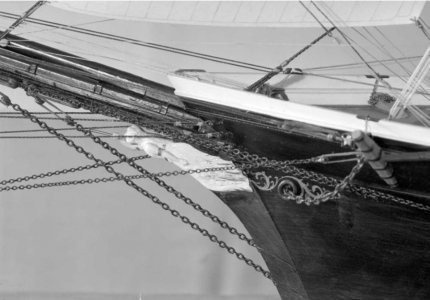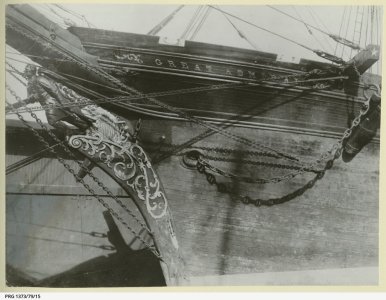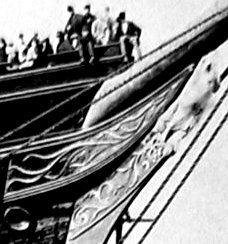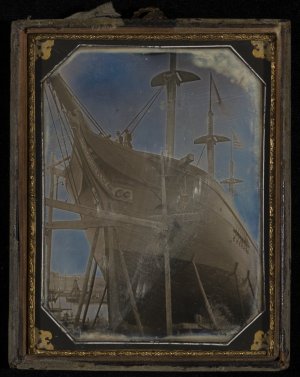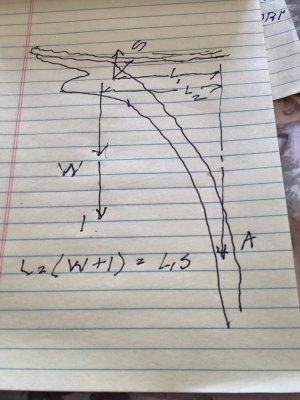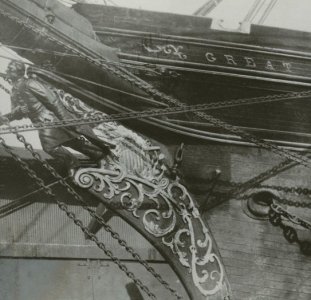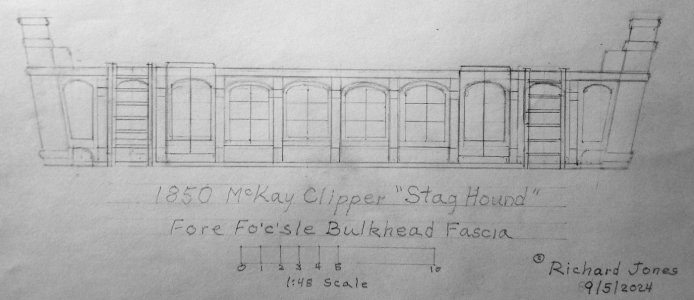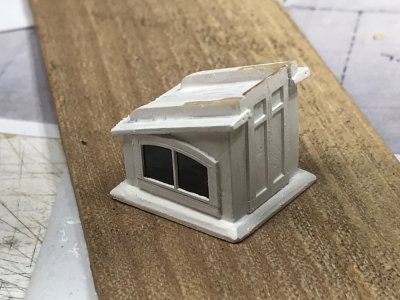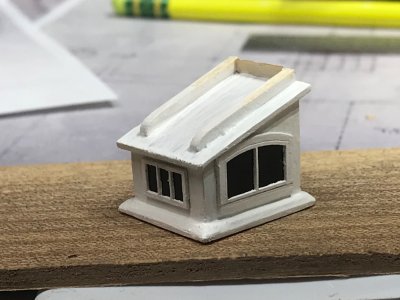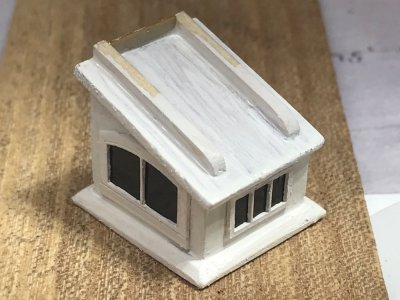Peter,
I've lightened and sharpened the previous tiny image to hopefully make it a little easier to identify details. As I said before, the woodcut artist intentionally used alternative vertical lines to emphasize the difference in this device. There's a distinct triangular shape just above and behind the trumpet bearing winged angel figurehead. Just behind where the angel's feet would rest is the gracefully curving cutwater. This piece is an extension of her stem.
To get an idea how dramatically different this somewhat crude but actually highly accurate illustration this is, compare this treatment to the bare stem prow on the otherwise impressive Boucher
Flying Cloud model. The angel figurehead is simply tacked onto the bare stem.
View attachment 469228
View attachment 469229







